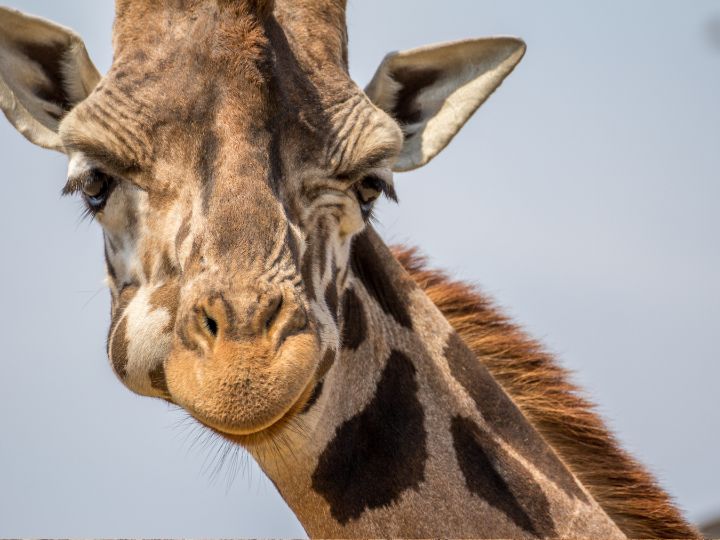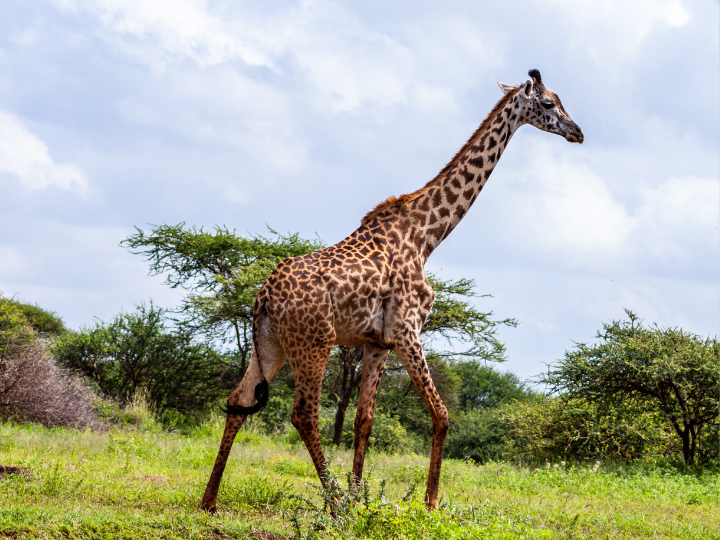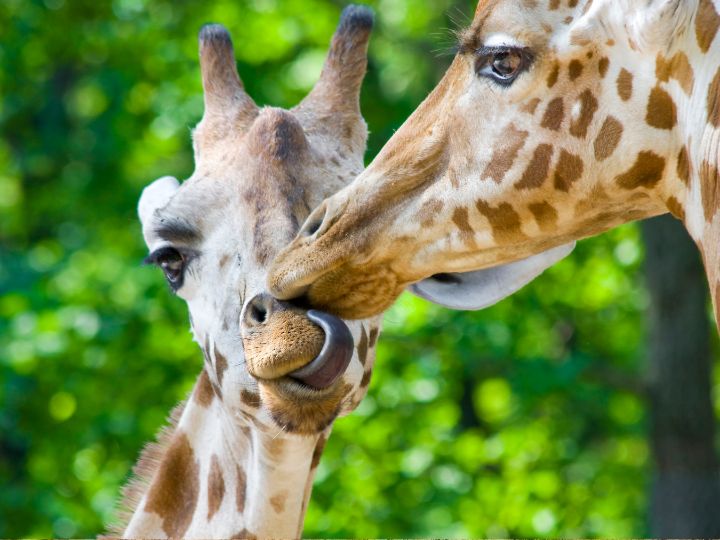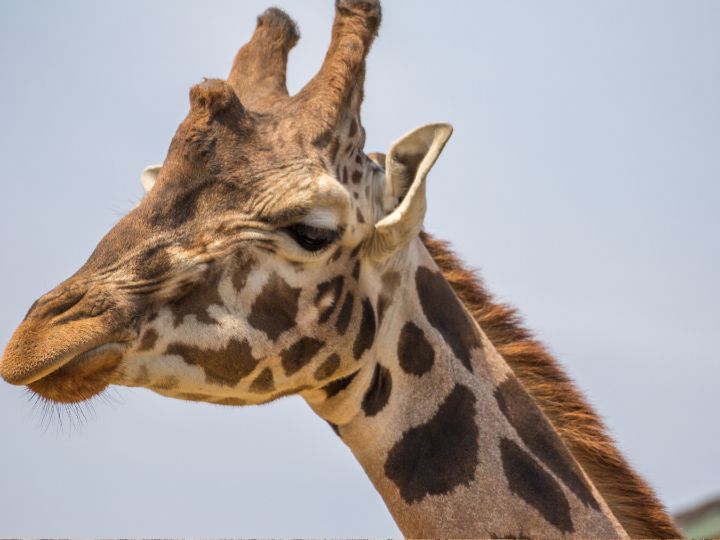Giraffes, the tallest mammals on Earth, have always been a subject of curiosity and fascination for animal lovers. While their long necks, unique coat patterns, and towering stature are well-known characteristics, there is another feature that often goes unnoticed—giraffe whiskers. Similar to other mammals, giraffes also possess whiskers to gather crucial information about their surroundings.
These thin, scattered whiskers are located on various areas of a giraffe’s face, including their nose, cheeks, and upper and lower lips. These tactile hairs play a vital role by functioning as vibration sensors, allowing giraffes to detect changes in their environment. As these gentle giants navigate the African savannah, their whiskers help them adapt and thrive in their specialized niche.

Image Credit: Canva
Giraffe Anatomy and Whiskers
Facial Whiskers
Giraffes have thin whiskers arranged in a scattered pattern covering their noses, cheeks, and upper and lower lips. These large African hoofed creatures display these unique sensory hairs as a part of their anatomy.
Function and Purpose
Giraffe whiskers act as vibration sensors, enabling them to gather information about their surroundings. This feature plays a significant role in helping giraffes navigate through their daily activities and environments, ensuring their safety and awareness.
Evolution of Whiskers in Giraffes
Adaptation for Height
Giraffes are known for their long necks, which help them reach leaves on tall trees. The evolution of giraffe necks is often attributed to one of two theories – Lamarck’s Theory, which suggests that giraffe necks gradually got longer over generations as they stretched to reach higher food sources, or Darwin’s Theory, which emphasizes the role of natural selection in the neck lengthening process. Regarding the whiskers, it is possible that they may have evolved alongside the giraffe’s height adaptations, providing additional sensory information to help giraffes navigate their environment.

Image Credit: Canva
Developing long necks has allowed giraffes to access food sources that other animals may struggle to reach. Whiskers, being sensitive tactile hairs, could help giraffes gain an awareness of their surroundings and maintain their balance. These thin whiskers are arranged in a scattered fashion, covering the front of their nose, cheeks, and upper and lower lip.
Connection to Other Mammals
Most mammals possess whiskers, although our understanding of their role in these animals largely comes from a handful of species, such as laboratory rats and mice. Nonetheless, it is likely that many mammals, including giraffes, use their whiskers for similar purposes – detecting and navigating their environment.
The fact that giraffes share this whisker feature with other mammals suggests that whiskers have a common origin in mammalian evolution and have evolved to support a variety of functions across different species. In the case of giraffes, their whiskers could play a critical role in supporting their unique height and feeding adaptations, allowing them to maintain their position as the tallest land animals.
In summary, the presence of whiskers in giraffes likely has its roots in mammalian evolution, with these sensitive tactile hairs adapting alongside other physical traits. While giraffe whiskers might seem peculiar, they serve an important purpose, aiding in environmental awareness and overall survival.
Whisker Care and Maintenance
Giraffes, although not commonly known for this feature, do have whiskers. These whiskers are thin and scattered, covering the front of their nose, cheeks, and upper and lower lip. Whiskers, or vibrissae, serve as specialized touch organs that are found in many mammals. In this section, we will discuss whisker care and maintenance for giraffes, focusing on their grooming habits.

Image Credit: Canva
Giraffe Grooming Habits
Giraffes are known to spend a significant amount of time grooming themselves. They use their long, flexible tongue to clean their face, including the whisker area. Their tongue is capable of reaching around their facial features, allowing for thorough grooming.
In addition to their self-grooming habits, giraffes also display social grooming behaviors. They may groom each other by using their faces or necks to gently rub the whisker area of their companions. This action helps to maintain their whiskers and fur while also strengthening social bonds among the herd members.

It is important for giraffes to maintain their whisker hygiene, as it allows them to keep their sensory organs in optimal condition. Clean and functional whiskers enable giraffes to sense their surroundings better and to find food more easily.
Frequently Asked Questions
Becky is a fervent wildlife enthusiast and pet care expert with a diploma in canine nutrition. Her love for animals stretches beyond the domestic, embracing the wild tapestry of global fauna. With over a decade of experience in animal welfare, Becky lends her expertise to OutlandishOwl through insightful articles, captivating wildlife information, and invaluable guidance on pet nutrition. Her work embodies a deep commitment to understanding the intricate lives of animals and a passion for educating others on sustaining natural habitats. Becky's hands-on conservation efforts and her knack for translating complex dietary science into practical pet feeding tips make her an indispensable voice for creatures great and small.




